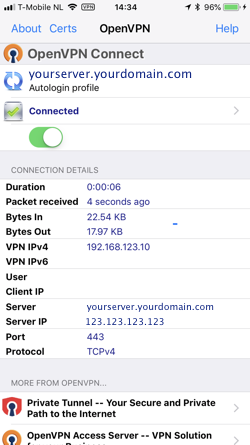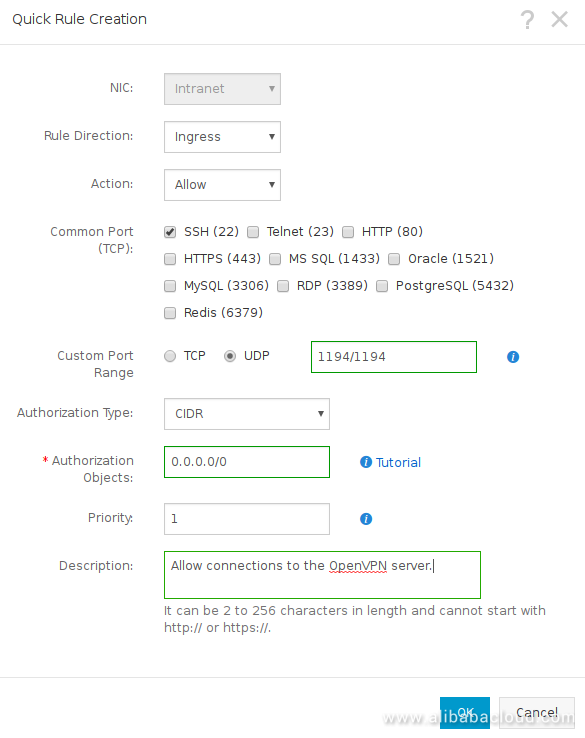

But a good starting point will be to look at easy-rsa, in particular version 3. Setting up a proper CA is not covered in this How-To. You will need to control your own CA for optimal security. In addition to that, a commercial certificate for OpenVPN does not provide you with any additional benefits. You should NOT go any where to buy yourself new certificates as that will make the VPN tunnel much less secure (unless you add extra authentication layers). There exists plenty of alternatives for CA management.

A PKI setup requires a Certificate Authority (CA). It allows multiple clients to connect to the same server, each client and server have separate keys. The PKI mode resolves many of these issues static encryption has.
HOW TO CHANGE OPENVPN ACCESS SERVER PORT HOW TO
How to configure static encryption can be found in the Static Key Mini Howto. Last of all, static encryption also only allows a single connection to your server. If you want to change the key, it must be changed on all clients. And you need to ensure that the key is securely copied to both hosts. It does not provide any type of perfect forward secrecy. The disadvantage of this type setup is that if your encryption key is compromised, all VPN data can easily be decrypted - even VPN data which has been captured in the past. The advantage of static encryption is that it is very easy to configure. In this How-To we will cover PKI encryption, as that is the most common way to use OpenVPN. It can use static encryption or Public Key Infrastructure (PKI). OpenVPN can work in two different modes in regards to encryption. To enforce only IPv4-only, you need to use udp4, tcp4-client or tcp4-server and similar to enforce IPv6-only with udp6/ tcp6-client/ tcp6-server. From the OpenVPN 2.4, OpenVPN will try both IPv6 and IPv4 when just using udp/ tcp-client/ tcp-server. In the current 2.3 releases, you will need to replace udp, tcp-client or tcp-server with udp6, tcp6-client or tcp6-server as the argument to the -proto option. It is also possible to connect using IPv6. You need separate OpenVPN instances for tackling that. Please do note that the OpenVPN server can not listen to multiple incoming ports, neither multiple protocols. Then you can add this line to the server configuration: For example listening to IP address 192.168.100.1, you need first to have a network adapter configured with this IP address. On the server side, you can use -local to tell OpenVPN to listen on a particular IP address. Without it, it will use the same port number as used to connect to the server. This makes OpenVPN use a random client side port when connecting. If you want to run multiple VPN clients on the same host, it is advisable to also add 'nobind' to your configuration file. You can also set different port numbers and protocols for each -remote, like this:įor advanced setups, it is also possible to use blocks, read more about that in the OpenVPN man page. You can list multiple -remote options in the configuration file, and OpenVPN will try all of them until it gets a connection. Both hostnames and IP addresses can be used. In the client configuration you need to tell where to connect. If you don't provide the 'port' option, 1194 will be used. The official OpenVPN port number is 1194, but any port number between 5 will work. In both client and server configurations. The reason for avoding TCP can be found here: If you cannot get a reliable UDP connection, then you might need to look into TCP.

Generally speaking, UDP is the preferred alternative in most cases. You must first of all decide if you want to use UDP or TCP for connections. Or you can use 'config' inside a configuration file to "include" another configuration file. Notice that you can use -config multiple times, to merge several configuration files.

Or if you do not use any options at all, you can just provide the file name directly. When starting OpenVPN, you can either use the -config option to tell OpenVPN which configuration file to use. When using these options in the configuration file must not use any leading dashes at all. The main difference is that on the command line you must use two leading dashes (-) for OpenVPN to understand what you mean. Almost all of these options can be used either on the command line directly or via a configuration file. One nifty detail about OpenVPN configuration options. Next up is the encryption layer, then there is the authentication layer and at the end we cover the network inside the tunnel. One part is the connection between server and clients. Each of them covers separate elements of a VPN tunnel. Setting up a VPN based on OpenVPN requires setting up a few "groups" of configuration options.


 0 kommentar(er)
0 kommentar(er)
